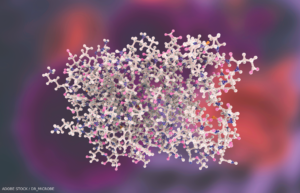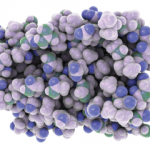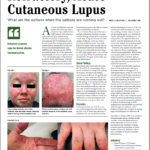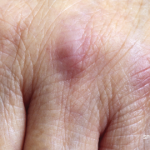 Type I interferons (IFNs) “are important to the initiation and maintenance of cutaneous lupus erythematosus and dermatomyositis,” says Victoria Werth, MD, a professor of dermatology at the Hospital of the University of Pennsylvania and the Corporal Michael J. Crescenz Department of Veterans Affairs Medical Center, both in Philadelphia.
Type I interferons (IFNs) “are important to the initiation and maintenance of cutaneous lupus erythematosus and dermatomyositis,” says Victoria Werth, MD, a professor of dermatology at the Hospital of the University of Pennsylvania and the Corporal Michael J. Crescenz Department of Veterans Affairs Medical Center, both in Philadelphia.
Dr. Werth is the co-author of a review that is part of a series on immunology for rheumatologists launched earlier this year in Arthritis & Rheumatology (A&R).1 In this new installment, Dr. Werth and co-author Grace A. Hile, MD, a dermatologist at the University of Michigan School of Medicine, Ann Arbor, review the role of type I IFN in the immunopathogenesis of cutaneous lupus erythematosus and dermatomyositis skin inflammation. They also discuss how emerging IFN-targeted therapies for systemic lupus erythematosus (SLE) could potentially be used to treat dermatomyositis skin disease.2
Disease Underpinnings
Although cutaneous lupus erythematosus and dermatomyositis “share common triggers, the type I IFN subtype and efficacy of current therapeutics differ and may indicate key differences in disease pathogenesis: cutaneous lupus erythematosus being more IFNα driven, whereas IFNβ plays a dominant role in dermatomyositis,” Dr. Werth explains. “In cutaneous lupus erythematosus and dermatomyositis the heterogeneity of response to treatment correlates with different inflammatory cells and cytokines in the skin, while the predominant dendritic cell in skin is often different in cutaneous lupus erythematosus relative to dermatomyositis.”

Victoria Werth, MD
The authors introduce the review with a clinical case study. Next, Dr. Werth and Dr. Hile provide an overview of type I IFNs and discuss triggers of skin disease, including ultraviolet light, medications, supplements and viral infections. The authors examine the role of IFNs in the immunopathogenesis of cutaneous lupus erythematosus and dermatomyositis. They finish with a review of the emerging therapies targeting type I IFNs.
The review includes detailed images and legends, an informative table and many references.
“There are validated end points for skin disease activity in cutaneous lupus and dermatomyositis that correlate with the quality of life in patients and with disease biomarkers. This has facilitated clinical and translational studies of therapeutic antibodies that target specific cytokines, pathways, or inflammatory cells that contribute to the inflammatory cascade seen in cutaneous lupus erythematosus and dermatomyositis,” Dr. Werth says. “These therapeutic approaches are discussed in this review. Understanding the pathogenesis of skin diseases and drivers that initiate disease, particularly the role of type I IFN, is key to the ongoing novel therapies under evaluation.”


